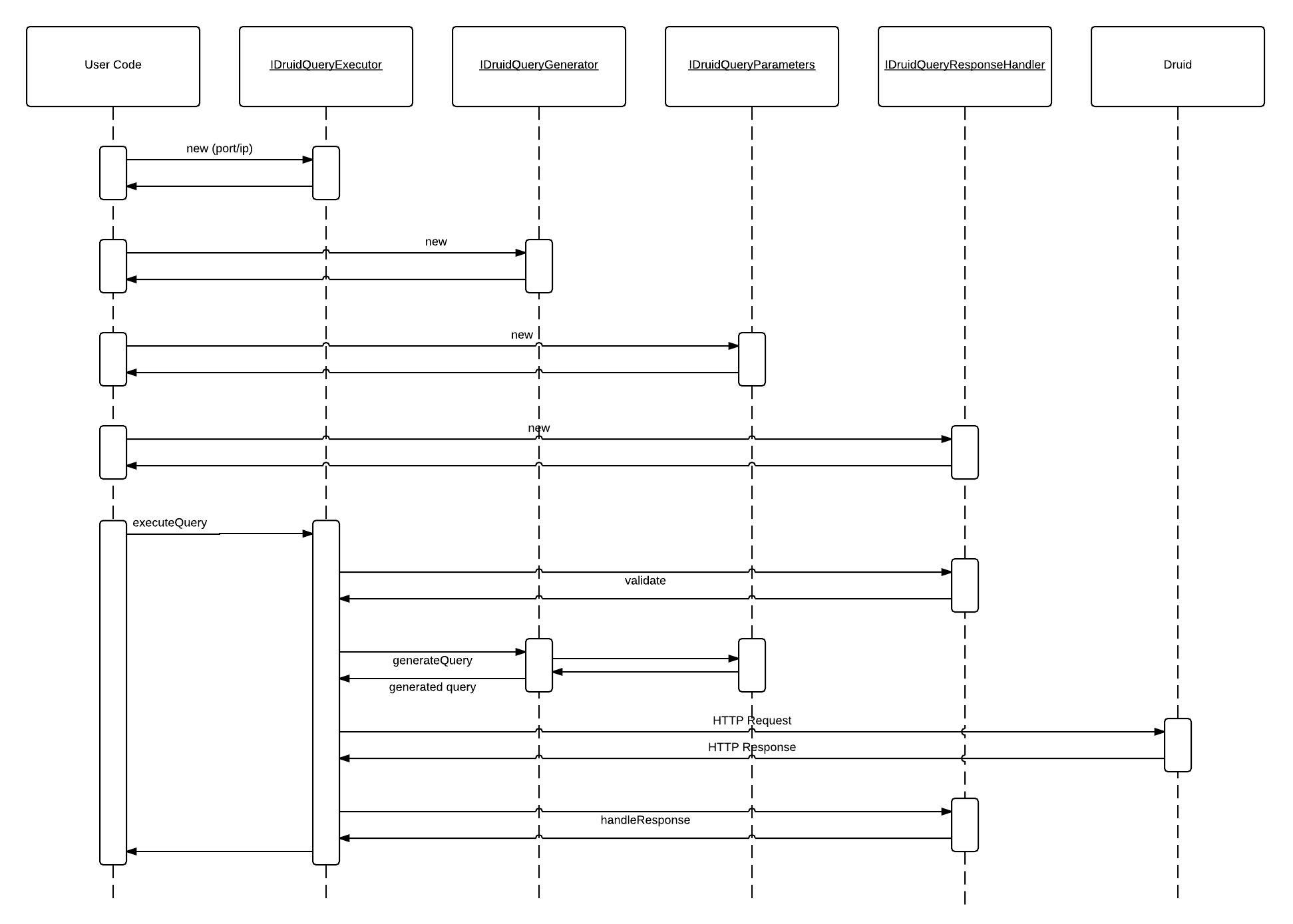r4j4h / php-druid-query
Experimental PHP wrapper around querying druid
Installs: 13 492
Dependents: 1
Suggesters: 0
Security: 0
Stars: 13
Watchers: 3
Forks: 7
Open Issues: 1
pkg:composer/r4j4h/php-druid-query
Requires
- php: >=5.3.0
- guzzle/guzzle: ~3.9
Requires (Dev)
- phing/phing: ~2
- phploc/phploc: ~2
- phpmd/phpmd: ~2
- phpunit/phpunit: ~4
This package is not auto-updated.
Last update: 2026-01-03 22:32:47 UTC
README
PHP wrapper around executing HTTP requests to Druid. Usually this will be for queries, but can be used for other purposes (such as ingestion).
Overview
The wrapper lives in the namespace DruidFamiliar. Druid itself was named in the sprit of the D&D character, and that
character could have a familiar - a spiritually linked animal companion. This wrapper in a sense lives as a companion to
Druid, and thus the name.
I think the repo name should reflect the namespace for clarity, it currently is php-druid-query while
the namespace is DruidFamiliar. This would be pretty breaking change and will be saved for the future. If you have
other suggestions for naming of project or namespaces, feel free to suggest before then.
Changelog
0.2.1
DruidTime/Intervalclasses added to make it easier to work with varieties of time inputs to Druid compatible time output.
0.2.0 Major refactoring
- Query and Response Handling separated. All interfaces renamed and redesigned.
IDruidConnectionis nowIDruidQueryExecutor.IDruidQueryis split intoIDruidQueryGeneratorandIDruidQueryParametersandIDruidQueryResponseHandler.BaseQueryis no longer needed, many similar classes were deprecated or removed.DruidNodeConnectionis nowDruidNodeDruidQueryExecutor.
0.1.0 Initial release
- Quick sketch for sharing early.
Typical Use
In general, this wrapper's purpose is to streamline the execution of queries by encapsulating the cruft from the HTTP nature of Druid and the analytical grammar in query configuration.
- Instantiate a connection, configured to hit a Druid endpoint.
- Instantiate a query generator object for the desired query.
- Instantiate a query parameters object, configured with desired query parameters.
- Instantiate a result handler to format the results (otherwise use
DoNothingResponseHandler) - Combine the connection, query, parameters, and response handler to execute it, getting the result from the result handler.
Interface wise, this looks like:
- Instantiate a
IDruidQueryExecutor, configured to hit a Druid endpoint. - Instantiate a
IDruidQueryGenerator. - Instantiate a
IDruidQueryParameters, configured with parameters. - Instantiate a
IDruidQueryResponseHandler. - Run the
IDruidQueryExecutor'sexecuteQueryfunction with theIDruidQueryGenerator,IDruidQueryParameters, and theIDruidQueryResponseHandler, getting the result from theIDruidQueryResponseHandler.
Implementation wise, this can look like:
- Instantiate a
DruidNodeDruidQueryExecutor, configured to hit a Druid endpoint. - Instantiate a
SegmentMetadataDruidQuery. - Instantiate a
SegmentMetadataDruidQueryParameters, configured with parameters. - Instantiate a
SegmentMetadataResponseHandler. - Run the
DruidNodeDruidQueryExecutor'sexecuteQueryfunction with the classes spawned in the previous steps, getting the result fromSegmentMetadataResponseHandler.
How to Install
Right now, there is no tagged version. To be ready for it when it comes, branch-aliases are in place.
- Stable branch:
~1.0@dev - Cutting edge:
~1.1@dev
To install, it is suggested to use Composer. If you have it installed, then the following instructions in a composer.json should be all you need to get started:
{
"require": {
"r4j4h/php-druid-query": "~1.0@dev"
}
}
Once that is in, composer install and composer update should work.
Once those are run, require Composer's autoloader and you are off to the races, or tree circles as it were (bad Druid reference):
require 'vendor/autoload.php';$yay = new \DruidFamiliar\Query\TimeBoundaryDruidQuery('my-cool-data-source');- Refer to the Typical Use section above.
How to Test
Once composer install has finished, from the root directory in a command terminal run:
vendor/bin/phing
or
vendor/bin/phpunit tests
Generate Documentation
From the root directory, in a command terminal run: php vendor/bin/phing docs.
Examples
Examples are located in the \examples folder.
They share connection information from _examples-config.php.
Change that match your Druid instance's connection info.
Right now most are designed to run via the CLI, but will work in a browser if a web server running php serves them.
The HTML outputting ones should print the query results to HTML:
How it Works & How to Extend
Please refer to this diagram for an overview of how this works underneath the hood.
(From this Dynamic LucidChart Source URL)
In general, to add support for a new query all you need to do is create a new class wherever you want that implements IDruidQuery.
By wherever you want, that could be in a fork of this repo, or outside of this repo using this repo's interfaces. That is up to you. :)
References
Appendix A. Composer.json example that does not rely on Packagist.org:
{
"repositories": [
{
"type": "vcs",
"url": "git@github.com:r4j4h/php-druid-query"
}
],
"require": {
"r4j4h/php-druid-query": "~1.0@dev"
}
}


